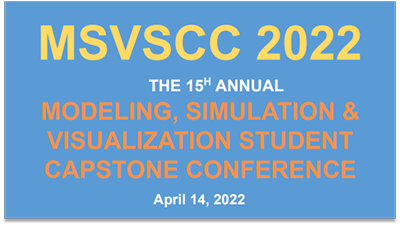Publication Date
2022
Conference Title
Modeling, Simulation and Visualization Student Capstone Conference 2022
Conference Track
Virtual Environments
Document Type
Paper
Abstract
The deployment of autonomous vehicles (AVs) has been expected to significantly reshape traffic safety on roads. However, there is still a relatively long journey to achieve high-level autonomy and the safety level of interaction between AVs and vulnerable road users (e.g., pedestrians, cyclists, or passengers) is still unclear due to very limited data and field tests. The main objective of this paper is to propose a high-fidelity human-in-the-loop simulation that is capable of supporting AV-pedestrian interactions by coupling an advanced AV simulator with virtual reality technology. The prototype of the extended simulation framework has been developed and demonstrated with experimental scenarios. The inclusion of real-world humans offers extensive opportunities for understanding the safety of AVs co-existing with vulnerable road users.
Keywords:
Pedestrians, Autonomous vehicles, Virtual reality, Human-in-the-loop, Simulation
Start Date
4-14-2022
End Date
4-14-2022
Recommended Citation
Yan, Zizheng, "Implementing Virtual Reality Technology for Supporting Autonomous Vehicle-Pedestrian Behavioral and Interaction Research" (2022). Modeling, Simulation and Visualization Student Capstone Conference. 3. DOI: 10.25776/1d09-t669 https://digitalcommons.odu.edu/msvcapstone/2022/virtualenvironments/3
DOI
10.25776/1d09-t669
Included in
Implementing Virtual Reality Technology for Supporting Autonomous Vehicle-Pedestrian Behavioral and Interaction Research
The deployment of autonomous vehicles (AVs) has been expected to significantly reshape traffic safety on roads. However, there is still a relatively long journey to achieve high-level autonomy and the safety level of interaction between AVs and vulnerable road users (e.g., pedestrians, cyclists, or passengers) is still unclear due to very limited data and field tests. The main objective of this paper is to propose a high-fidelity human-in-the-loop simulation that is capable of supporting AV-pedestrian interactions by coupling an advanced AV simulator with virtual reality technology. The prototype of the extended simulation framework has been developed and demonstrated with experimental scenarios. The inclusion of real-world humans offers extensive opportunities for understanding the safety of AVs co-existing with vulnerable road users.

